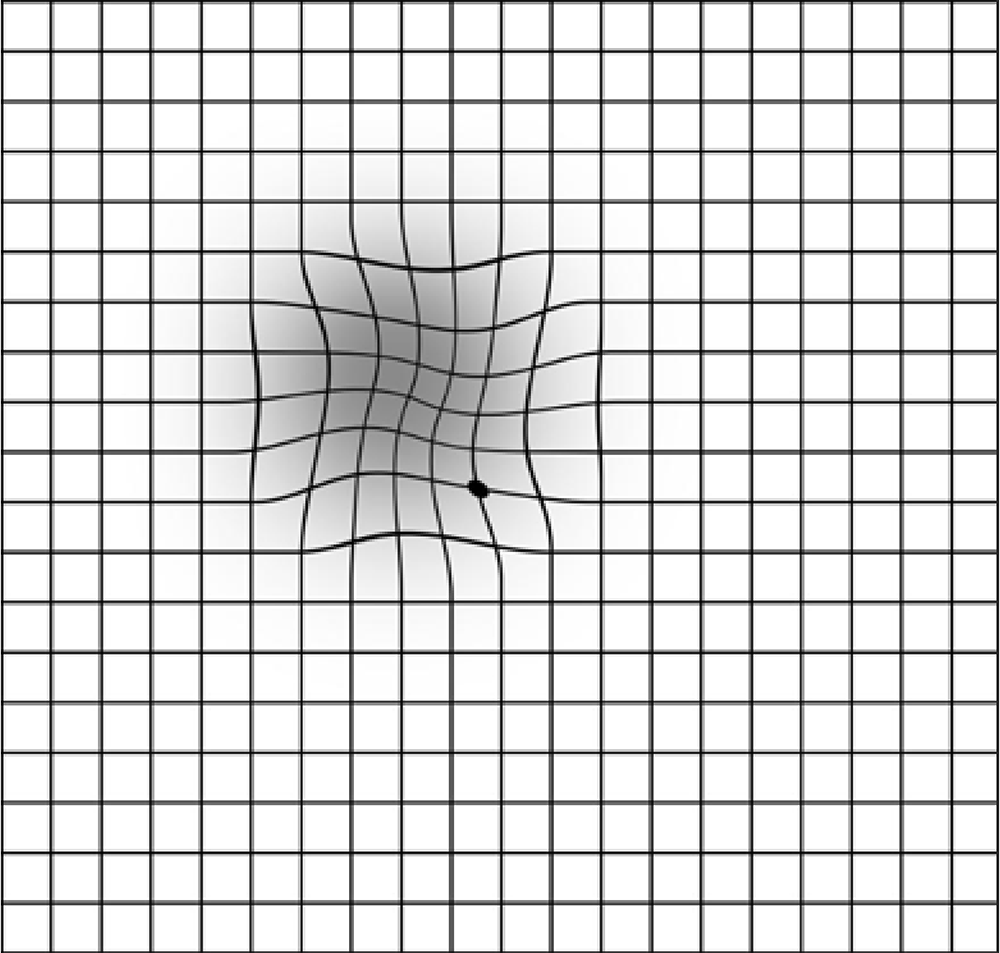Questions?1-833-393-4363
Maintaining your vision
It’s important to stay on top of your eye health
Let your retina specialist know of any changes in your vision right away.
SLIDE TO SEE HOW DME CAN AFFECT YOUR VISION
Normal vision
With normal vision, the Amsler grid looks like straight horizontal and vertical black lines with a dot at the center.
Normal vision (left)
With normal vision, the Amsler grid looks like straight horizontal and vertical black lines with a dot at the center.
Impaired vision
With DME, the grid may appear wavy with broken or distorted lines and dark, blurry areas, especially in the center.
Impaired vision (right)
With DME, the grid may appear wavy with broken or distorted lines and dark, blurry areas, especially in the center.
You can test your vision at home with a simple eye test called the Amsler grid.
How to use the Amsler grid:
Check your vision at least once a week
Talk to your retina specialist if you notice missing corners, dark or blank spots, or blurry, distorted, or wavy lines.



